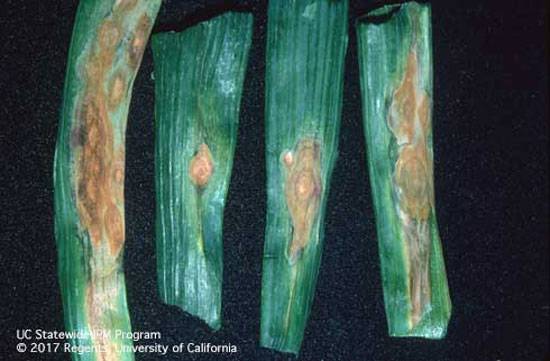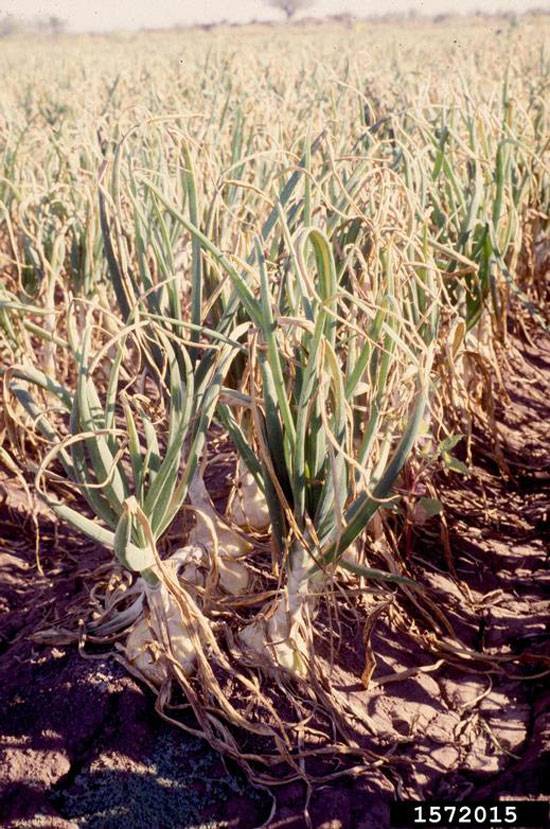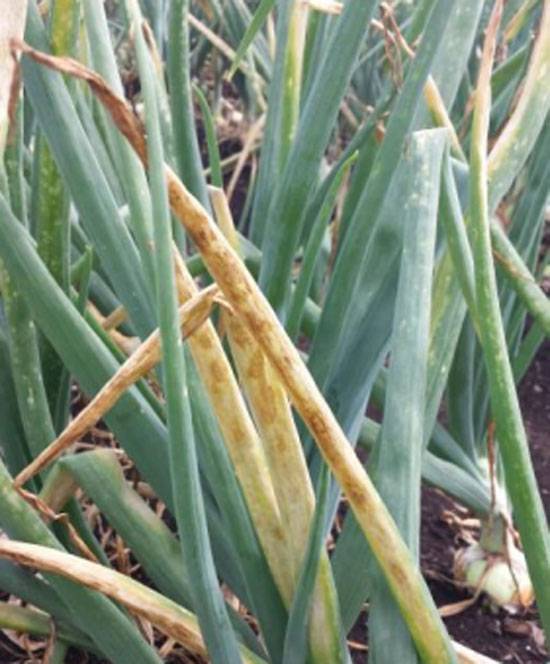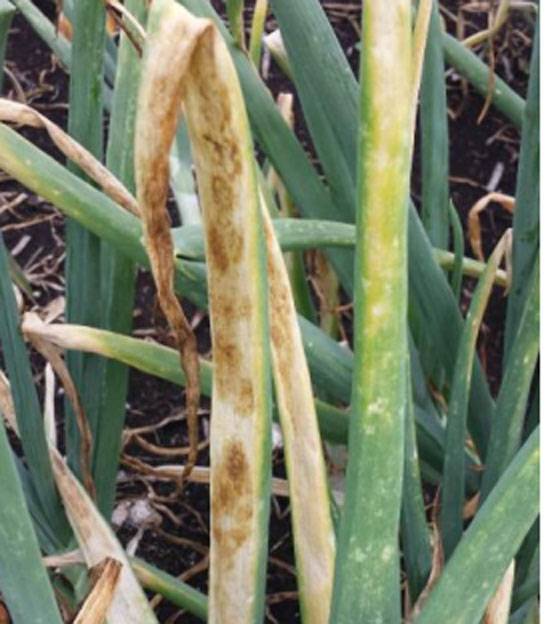Onion
Stemphylium leaf blight

Stemphylium vesicarium
Fungal Disease

Stemphylium vesicarium
Fungal Disease

Stemphylium vesicarium
Fungal Disease

Stemphylium vesicarium
Fungal Disease

Stemphylium vesicarium
Fungal Disease

Stemphylium vesicarium
Fungal Disease
Stemphylium leaf blight, caused by Stemphylium vesicarium, primarily affects the radial leaves of onion seedling. The disease manifests as small yellowish to orange flecks or streaks on the middle of leaves, which rapidly develop into elongated, spindle-shaped spots surrounded by a distinctive pinkish margin. The disease can cause significant damage, especially to the seed crop when it infects the inflorescence stalk.
The fungus survives in plant debris or soil, making it crucial to manage post-harvest residues. Warm and humid conditions, particularly temperatures between 18-25°C and extended periods of leaf wetness (16 hours or more), are ideal for the development and spread of this blight. Effective management includes proper crop rotation, sanitation, and timely fungicidal applications to mitigate crop losses.
Stemphylium leaf blight is a significant concern for garlic and onion growers, characterized by multiple small lesions that can coalesce, leading to blighted leaves. This disease, caused primarily by Stemphylium vesicarium, can also girdle seed stems, threatening crop yields. Although classified as a weak pathogen, Stemphylium vesicarium often infects onion plants secondarily, typically after the plants have been stressed by other diseases or environmental conditions.
The disease frequently develops in conjunction with iris yellow spot lesions or on dead leaf tips following severe heat stress. Both the Stemphylium fungus and other pathogens like downy mildew can exacerbate the problem, particularly in onion crops. Effective management of downy mildew is therefore essential to prevent outbreaks of purple blotch and Stemphylium leaf blight.
Favorable conditions for these diseases include moderate temperatures, particularly in the mid-21°C range, and high canopy humidity. Heavy dew is particularly conducive to their development in desert areas, while foggy and rainy weather can promote disease in other regions. Even in the absence of rain, high humidity and nighttime dew can trigger outbreaks. The airborne spores of the fungi spread easily, making monitoring and control measures crucial for preventing significant crop damage.
Growers can mitigate the risks by maintaining good air circulation, practicing crop rotation, and managing irrigation effectively to reduce humidity levels in the canopy. Understanding these diseases and their conditions for spread can help in developing an effective disease management strategy for garlic and onion crops.




